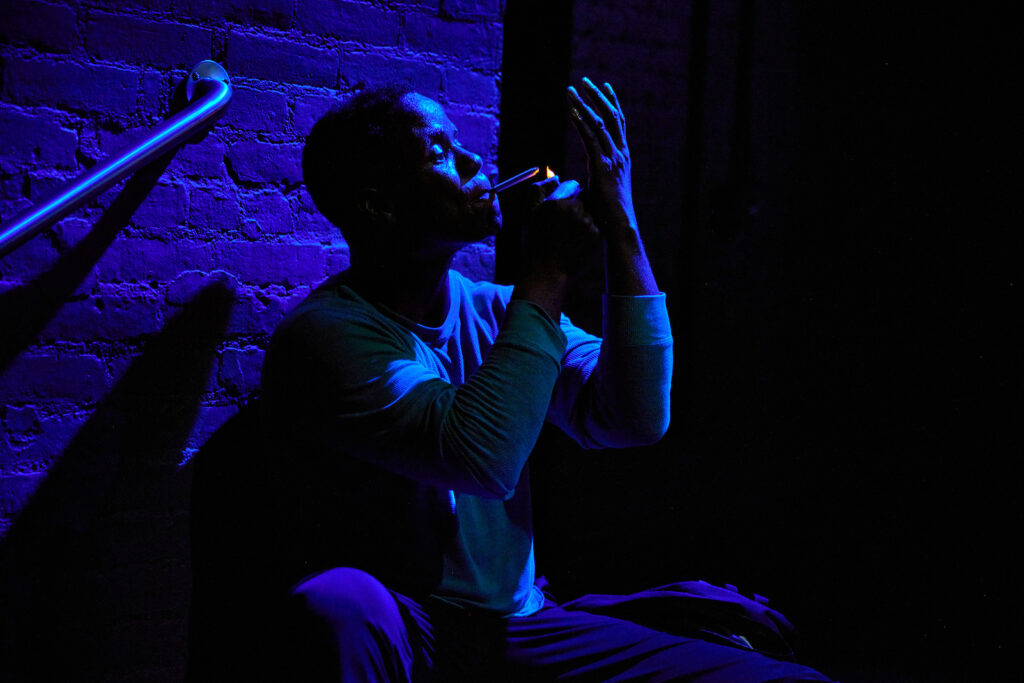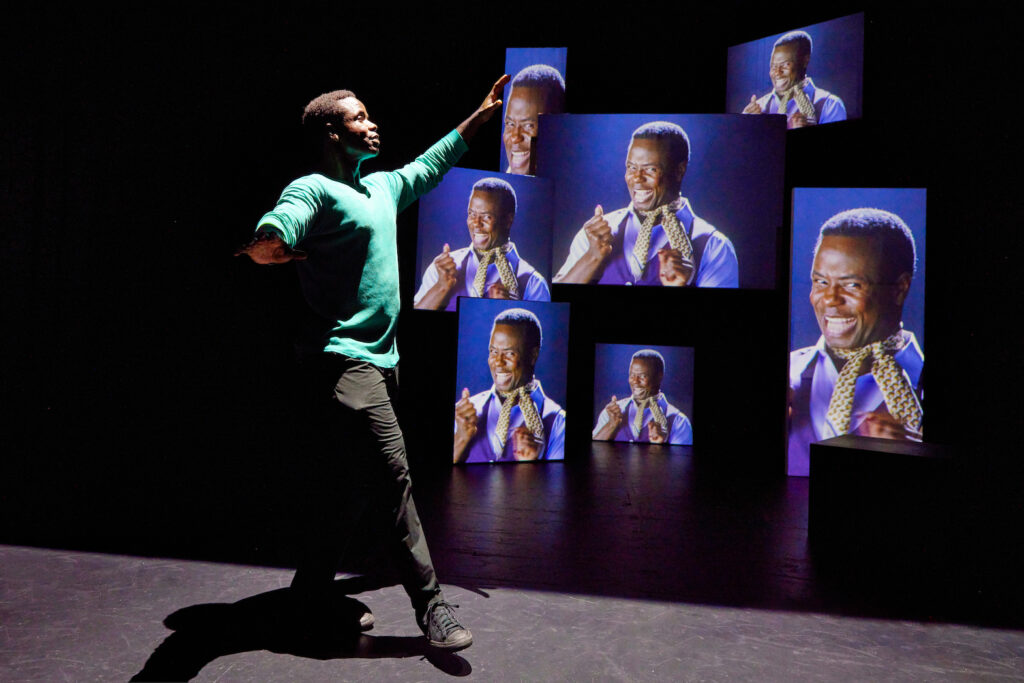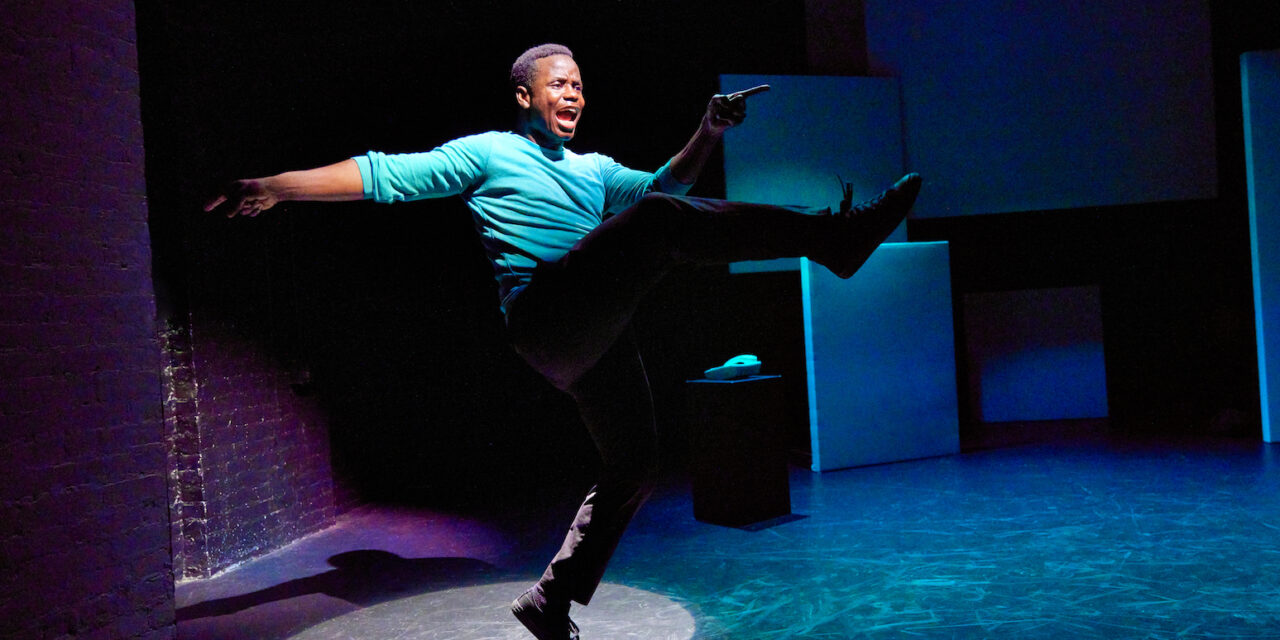By Brian Scott Lipton . . .
Anyone remotely involved in the world of entertainment knows the meaning of the phrase “triple threat”: someone who can act, sing and dance. Anyone who has been going to New York theater in the past two decades knows the term applies to James T. Lane, who has memorably appeared on Broadway in The Scottsboro Boys, Chicago and, most notably, as Richie in the 2006 revival of A Chorus Line.
So it’s not surprising that Lane proves himself worthy of the traditional term once again in Triple Threat, now at Theatre Row. But as we learn during this unusually honest and brave 80-minute multi-character solo show, the term has a far different meaning for its star and creator.

Yes, he can move with extraordinary flexibility and he can belt out “On Broadway” with enormous power and feeling. But more importantly, Lane proves to be a remarkable actor and writer. Even more importantly, he proves to be that rare person who is willing to share how he went to hell—and why—and how he was able to come back to show us his heaven-sent gifts.
For the record, let’s just say we’re glad we know the piece has a happy ending. Watching the struggles of Lane—a promising talent raised in South Philadelphia by a loving single mother—as he loses his way, first (briefly) by injury, and then by drug use and sexual promiscuity, is utterly heartbreaking.
Worse yet, while we clearly see some of the underlying causes of Lane’s self-destructive behavior—the racism exhibited by white men, the internalized homophobia suffered by many gay men of all races, the fetishization of the black body—they’re not immediately apparent to Lane.
And we don’t learn the entire sordid truth until the very end! While his personal story was even worse than we first realized, Lane takes responsibility for his own actions, and acknowledges that neither his past nor his skin type were literally responsible for his “choices.”


Lane and director/choreographer Kenny Ingram have crafted a very fluid piece, with Lane almost constantly in motion, switching into and out of other characters’ voices and bodies with alarming speed. For better and worse, this tactic often leaves us a little perplexed about the show’s timeline or where we are. However, since it’s ultimately Lane’s cumulative experiences that matter more than his individual ones, the occasional lack of specificity isn’t much of a liability.
The show also cleverly uses video projections (by Tij D’Oven) to allow for some special commentary, with Lane playing a sassy airline steward, a TV commercial-type announcer who instructs him how to use crack (the script says this is Clare Huxtable of The Cosby Show, but that went over my head), and a judge who eventually sentences Lane in the aftermath of a crime. The videos add some much-needed visual appeal to the show, given the spare set by Teresa Williams and the one “costume” worn consistently by Lane.
If one insists, I imagine one can view Triple Threat as a cautionary tale. But, as Lane insists, it’s really just his own story. Or, more aptly, in his words: “[I was] tired of being a sliver of a character in someone else’s story. Sick of somebody else who has never walked a day in my shoes makin’ art about me and the life I live. So I wrote that shit myself. That’s power.”
Triple Threat. Through July 30 at Theatre Row (410 West 42nd Street, between Ninth and Tenth Avenues). www.bfany.org
Photos: Jeremy Daniel


















